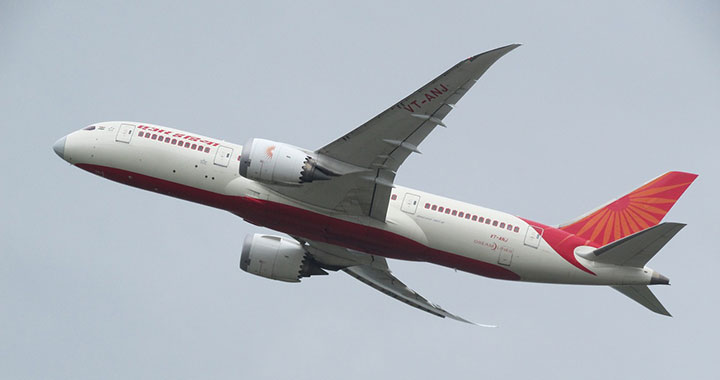 A night Earth observation photograph taken from the International Space Station, as it passes over Japan. (Source: Scott Kelly/NASA)
A night Earth observation photograph taken from the International Space Station, as it passes over Japan. (Source: Scott Kelly/NASA)
ALEXANDRIA, Va. — The Asia Pacific Satellite Communications Council (APSCC) is the largest and only organization serving the region’s satellite industry. With 62 members across 30 countries, APSCC helps companies navigate local and international issues affecting space and the satellite industry.
Constellations recently spoke to APSCC President Terry Bleakley, who assumed the role earlier this year after more than two decades at Intelsat and time at MEASAT. Today he is focused on continuing to build APSCC with an eye toward emerging opportunities in the region.
The Coming Mobility Boom
“The opportunities in the region vary,” Bleakley noted. Asia Pacific is diverse, geographically large and the needs and capabilities differ between developed and developing economies. Cellular backhaul is a area where satellite can play a bigger role for economies building out their 5G networks and those focused on basic connectivity.
“I also see a really positive trajectory for mobility applications in Asia,” he continued. The region has a large maritime market for both broadband and narrowband IoT solutions and there is a lot of potential in the expansion of in-flight connectivity (IFC).
Today, Asia represents 30% of the global aircraft fleet and just a small portion of the world’s connected aircraft. Over the next decade, the global aircraft fleet will grow from 28,000 to 40,000 with Asia’s share of the global fleet projected to expand to 40%.
“You’ve got two factors playing here,” Bleakley explained. “There are more aircraft coming to Asia than anywhere else and it’s underrepresented in IFC connectivity. So, that creates incredible opportunity.”
India will be a key country to watch as it seeks to become a hub for domestic and international travel and increase connectivity. Last year, the Tata Group bought India’s national carrier, Air India with plans to modernize the airline. That modernization included a record 470 aircraft ordered from Boeing and Airbus, marking one of the single largest commercial aircraft orders. The planes will be delivered over the next eight years at a time when carriers are increasing in-flight connectivity to potentially half of the global fleet and IFC revenues could exceed $6 billion.
 India’s expansion as a hub for domestic and international flights will have implications for the in-flight connectivity market. (Source: Pixabay)
India’s expansion as a hub for domestic and international flights will have implications for the in-flight connectivity market. (Source: Pixabay)
“With satellite really being the only medium for connecting these aircraft, this is a major opportunity for the industry in Asia Pacific,” Bleakley emphasized.
India is also undertaking major policy changes related to the regulatory environment around commercial space, which could open doors to more partnerships with international satellite operators and related service providers.
Becoming More Relevant to Telcos
Like other parts of the world, there is a big play for satellite to become a more integrated part of the Asia Pacific telecommunications ecosystem. Today, the worldwide telecom market is valued at $3 trillion. Satellite accounts for just a 1% slice of that total.
“I think the satellite industry needs to become more relevant to the telco industry,” he said. “We’re a little fish in a big pond. We need to become a bigger fish, and how we can do that is through standards adoption and virtualization.”
The inclusion of satellite and other non-terrestrial networks (NTN) in Release 17 of the 5G standard was a significant step in setting the stage for satellite to reach billions of connected devices around the globe. By next year, 3GPP’s Release 18 will further integrate satellite using 5G waveforms and evolve end-to-end technologies for enhanced network performance.
“That means, for the first time, satellite doesn’t sit on the outside of a network and has to try to integrate. It seamlessly fits into the network through the standards,” Bleakley said.
“It also means, for the first time, the industry can go to scale.”
The potential to scale was apparent in Qualcomm’s recent announcement of two modem chipsets for satellite IoT, developed using 3GPP Release 17 standards. The company also partnered with Iridium and several phone makers earlier this year to deploy the Snapdragon Satellite chip for two-way, emergency messaging.
“Qualcomm, one of the biggest producers of chipset for handphones, is now getting into this marketplace. So, we’re starting to see, already, the economies of scale you get through embracing standards, like 5G,” Bleakley emphasized.
While there is strong potential to marry satellite and smartphone technologies, there’s also a need to “curb the enthusiasm,” he noted. Existing technology is limited to line-of-sight, emergency SMS text messaging. Moreover, battery life is also an issue when trying to close a satellite link on a cellphone.
In addition to 5G standards, Bleakley cited the DIFI standard interface, for digitizing intermediate-frequency RF and Carrier Ethernet, network performance standards that will also help satellite work more seamlessly within terrestrial networks.
Regional Advantages of Virtualization
Another way to increase relevance to telcos is through virtualization, Bleakley explained. Terrestrial operators have been replacing dedicated network hardware with software-based functions for well over a decade. The satellite industry has lagged behind this trend but is now catching up with virtualized components in both the ground and space segments.
Bleakley noted that virtualization “has advantages when working in Asia Pacific.” Transporting satellite equipment into highly regulated regional markets is not easy. Duties, taxes and other factors that add time and cost to deploying a satellite ground service. Virtual components and software-based solutions can be deployed, upgraded and switched out remotely, avoiding certain “logistical nightmares” that come with hardware-centric systems.
Finally, Bleakley cited “smart edge technologies” or more capable, less cumbersome, lower-cost electronically steered antennas as another lever to ease telco’s adoption of satellite technology.
Preserving Space, Preserving Spectrum
As the leading satellite industry organization for the Asia Pacific, APSCC is also monitoring areas that are or could present challenges to its members. Spectrum preservation is one of the critical issues that is becoming more important as less of it is available. Bleakley described the “land grab” for C-band spectrum with mobile network operators (MNOs) eyeing Ku and Ka-bands for 5G networks and beyond. He acknowledged the coming years will be a “balancing act” between the needs of the satellite industry and MNOs, many of whom are satellite customers.
Sustainability and ensuring space remains accessible to future generations is also emerging as a top issue for APSCC, particularly as members observe the deployment of massive constellations. “There is a finite number of satellites you can put up in each orbit and I don’t think that’s being tracked properly,” Bleakley said. “The fear is it’s like the wild west. The regulation tracks behind those who are ambitious enough to grab what they can and it could lead to disarray in the future.”
These issues were addressed at last year’s annual APSCC conference, which was attended by more than 140 companies. APSCC will be holding its 2023 conference this October in Kuala Lumpur.
Explore More:
Podcast: Facing Natural Disasters, Endless Grit and Closing the Digital Divide in APAC
Asia Pacific Satellite Operators Compare Multi-Orbit Strategies, Weigh in on Starlink Competition
Satellite Moving Closer to Telcos with Ground Virtualization, 5G
Software-Defined Satellites Meet Software-Defined Ground
